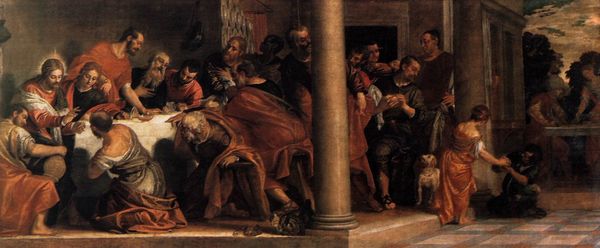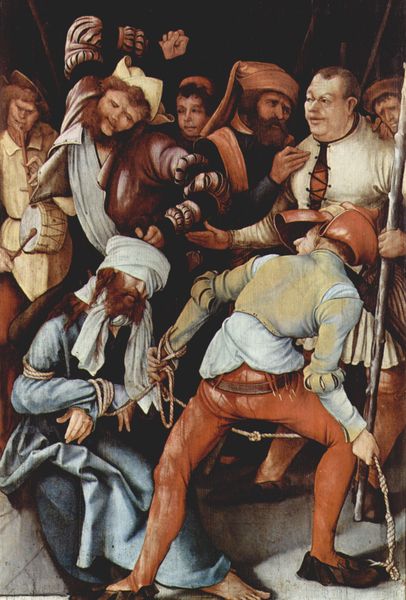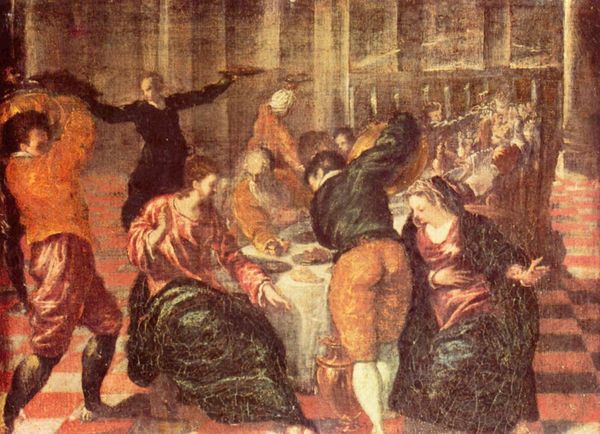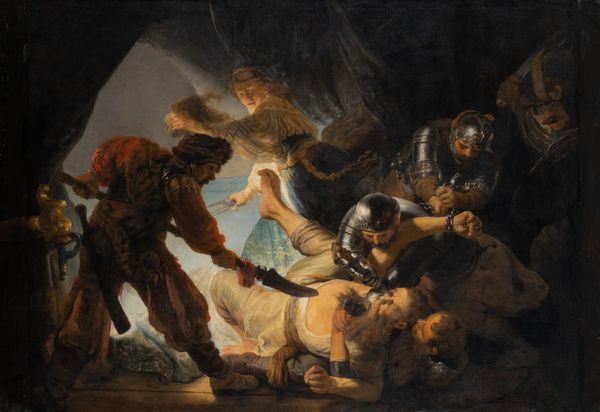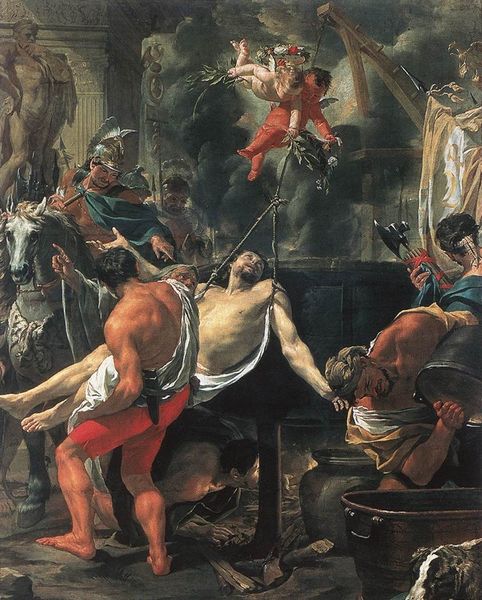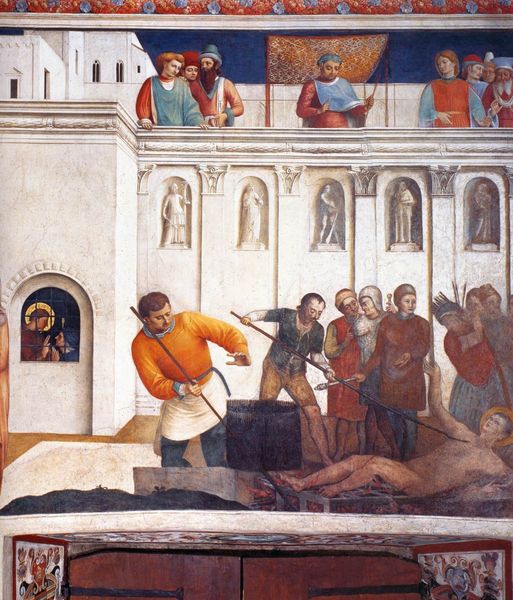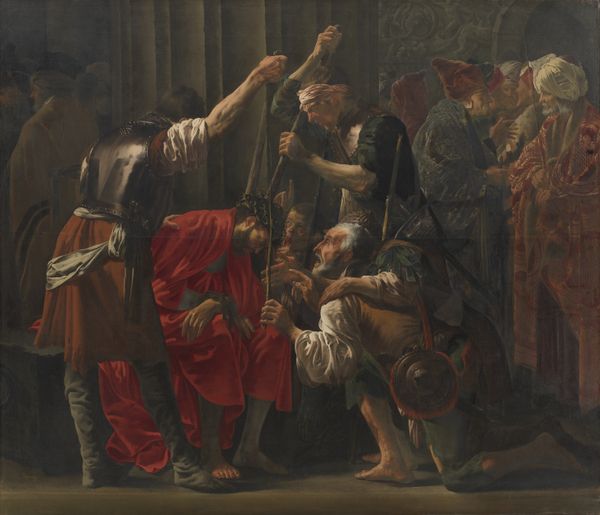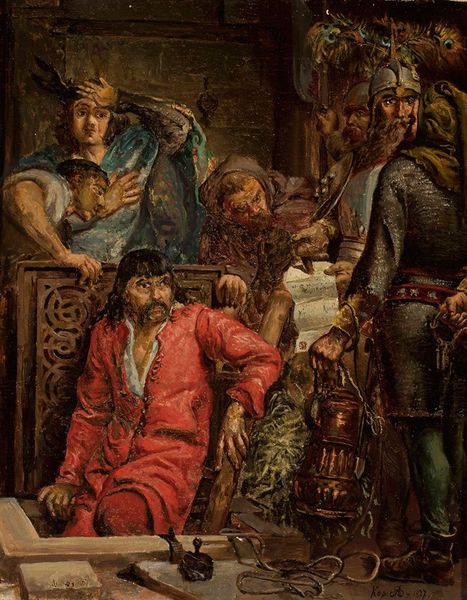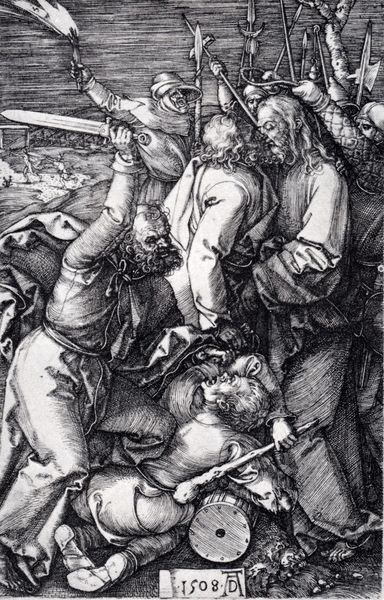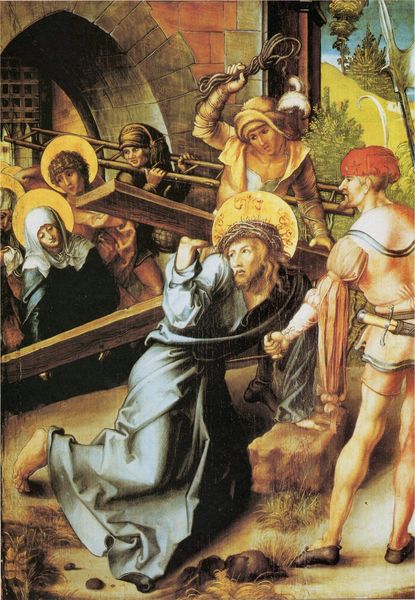
panel, painting, oil-paint
#
portrait
#
high-renaissance
#
panel
#
painting
#
oil-paint
#
oil painting
#
men
#
painting painterly
#
genre-painting
#
portrait art
Dimensions: 141 x 100 cm
Copyright: Public domain
Editor: This oil on panel piece, titled "The Surgeon" from 1555 by Jan van Hemessen, is quite striking. The chaotic scene of what seems to be a surgery is really visceral. What can you tell me about it? Curator: Looking at this panel, I am drawn to consider the material conditions represented and implied in the work's production and content. Hemessen is not just depicting a genre scene but showcasing labor – the labor of the surgeon, the (forced) labor of the patient, and even the labor implied in the painting's creation using expensive pigments and the panel itself. How does the very materiality of paint contribute to its message, do you think? Editor: That's interesting; I hadn't considered that angle. The painting, created from ground pigments and oils meticulously applied, acts as its own type of intensive labour. Curator: Exactly! Consider too how this panel challenges the hierarchies of art and craft. "Genre-painting," like the work here, typically considered a lower art form, gains importance by Hemessen portraying craft or "tradesmen" like surgeons, offering an examination of what's considered "lowly" labor, vis-a-vis "high" art forms made from "pricey" commodities. Is the labour in the market comparable to labor done in the medical field? Editor: I see your point. Both are economic activities responding to needs and wants. It kind of forces us to confront the commodification of our bodily autonomy when it's juxtaposed to what it cost to produce this painting. The panel itself has financial meaning because it takes so much specialized labor to work with these sorts of materials. Thank you! Curator: Indeed! Reflecting on this work through a material lens unveils layers of meaning connected to labor, production, and the challenges to historical divisions between "high" art and "common" labor.
Comments
No comments
Be the first to comment and join the conversation on the ultimate creative platform.
